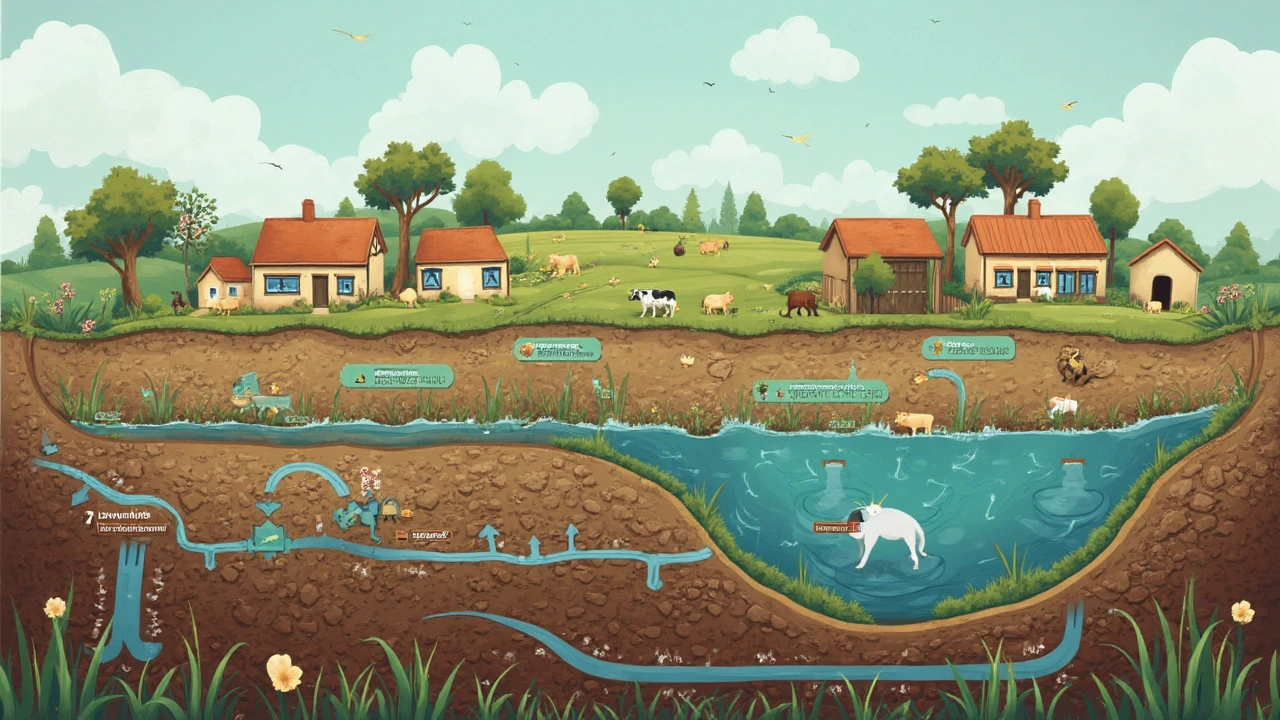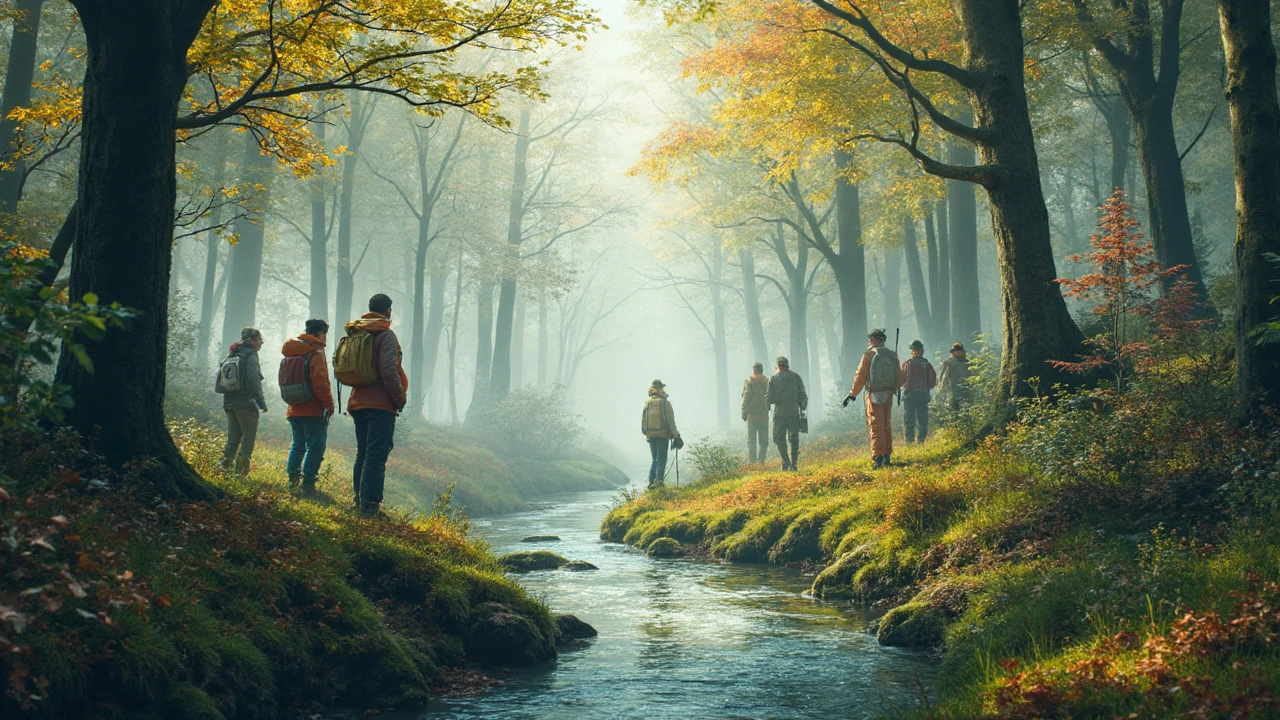In Brazil, Amazon jungle villages see cases of leprosy that would surprise most people in London, New York, or even Oxford. In India, rural communities worry about the mysterious sores that just won’t heal. Leprosy isn’t just a thing of the Middle Ages—it quietly survives in specific environments while most of the world moved on. How is that possible? Modern science now points the finger at something unexpected: the environment itself. Not just bad luck, not just person-to-person contact. Soil, climate, water, animals—they’re all part of the story.
What Is Leprosy and Why Does the Environment Matter?
Leprosy, officially called Hansen’s disease, is caused by the tricky bacterium Mycobacterium leprae. This microbe infects the skin and nerves, sometimes for years before anyone notices. It’s notorious for being slow—so slow, in fact, that it can take five years before symptoms show up. You’d think with modern medicine, we could stamp it out. Yet around 200,000 new cases pop up globally each year, according to the World Health Organization. What’s odd is that these cases aren’t spread evenly. Leprosy clusters in places with certain environmental features—think damp, warm soils, crowded housing, and areas where people might have frequent contact with wild or domestic animals. Scientists noticed that the old explanation (close person-to-person contact) couldn’t explain why, say, two villages just a few kilometers apart would have such different leprosy rates. That’s where Mother Nature enters the equation.
But why does the environment matter so much? Unlike many common germs, Mycobacterium leprae can survive outside the human body for weeks and sometimes for months, hanging out in soil, water, and possibly inside animals without causing disease in them. Environmental factors like temperature, humidity, proximity to forests, and particular wildlife affect whether these bacteria linger long enough to infect someone new. Areas with poor sanitation, limited access to clean water, or exposure to wild animals like armadillos (especially in the Americas) seem to report more new cases even when human-to-human contact is low. So, if you think of leprosy as purely a human problem, you’re missing half the story.
How Climate, Soil, and Water Shape Leprosy’s Survival
When researchers mapped global hotspots for leprosy, they found a clear pattern tied to climate. The bacterium that causes leprosy really likes warm, moist places. So, tropical and subtropical climates—like parts of Brazil, India, Indonesia, and Central Africa—end up as enduring pockets of infection. Temperature is a key ingredient. Mycobacterium leprae dies off quickly in cold or dry conditions. But in steamy, humid environments, it thrives. That’s why remote rural areas with damp soils and lots of rain often see more persistent cases, while drier and colder countries have nearly wiped leprosy out.
Let’s get down to the dirt—literally. Studies in Madagascar, Brazil, and India have found leprosy DNA in soil samples from villages where the disease is still present. In places where people go barefoot or work the land daily, bacteria from the soil can find its way into cuts or cracks in the skin. It sounds wild, but there’s growing evidence that soil acts as a silent springboard for infections. Now, turn on the tap. Lack of clean water means people use rivers, ponds, or unprotected wells—water sources that might be contaminated with leprosy bacteria from other humans or animals. Add in frequent flooding or high water tables, and suddenly, the environment is the perfect petri dish for Mycobacterium leprae.
Take a look at the numbers:
| Country | Average Humidity (%) | Leprosy Cases per Year |
|---|---|---|
| Brazil | 75 | ~29,000 |
| India | 70 | ~120,000 |
| United States | 65 | ~200 |
| Norway | 60 | <5 |
There’s a visible trend—humid, tropical areas see far higher case loads. Environmental surveillance is now an active area of research, with scientists trying to predict where future outbreaks might flare up based on temperature, rainfall, and water quality data.

Wildlife, Insects, and Leprosy: Hidden Partners in Transmission
Here’s something you might not expect: animals can carry Mycobacterium leprae. In the southern United States, armadillos are known reservoirs. Around 30% of wild armadillos in Texas and Louisiana carry leprosy bacteria, and in rare cases, people have caught the disease after handling or eating them. But it’s not just armadillos. In the UK, scientists have found closely related leprosy bacteria in red squirrels. It’s super rare for humans here to get infected, but it shows the bacteria’s knack for surviving in the wild and popping up in weird places. There’s even early research suggesting other rodents, and possibly insects like mosquitoes, might play small roles in some regions—though this isn’t confirmed for human transmission.
It’s not all about dodging wildlife, though. The kind of environment that supports animal reservoirs tends to be the same one where humans have closer contact with animals—rural farming communities, or regions where hunting and foraging are common. These are often areas where the classic public health messages about boiling water and washing hands can’t reach everyone, simply because people are living by natural water sources and off the land. Fact: in Brazil, researchers found that villages close to forests where armadillos live had double the rate of leprosy compared to those farther away. Even if you never see the animals, their presence shapes the invisible biology around you.
One angle scientists are watching closely is the migration of both wild and domestic animals, as climate change pushes habitats north and south. If an animal reservoir moves into a new area, leprosy could suddenly appear where it was once totally absent. When you combine wildlife, water, and open land, it becomes clear how the environment is more than just a backdrop—it’s an active player.
Poverty, Housing, and the Built Environment
It’s hard to untangle environmental factors from poverty because the two are linked in real life. Leprosy doesn’t just pick on random places; it’s drawn to communities where people live in dense, poorly ventilated houses, with minimal sanitation, and limited healthcare access. Poorer areas often lack rubbish collection, making it easier for rodents and other animals to move closer to homes. Open drains, stagnant water, and crumbling walls offer perfect hiding spots for both bacteria and the creatures that spread them. In India, stats show that regions with the highest rate of people living in slums have the heaviest leprosy burden.
Public health teams in the Philippines ran an experiment by improving basic housing—better airflow, raised floors off the soil, closed windows—and tracked infection rates for several years. Here’s what happened: villages with improved homes saw a drop in new leprosy cases by over 40% compared to those without changes. It’s not magic, just common sense—fewer bacteria sneaking in from soil and water, less crowding, and cleaner surroundings make it harder for the disease to stick around.
The same is true with access to clean water and toilets. It might sound boring, but this is where the real battle against *leprosy* is being fought in places like rural Africa and Brazil. Think of it as a chain reaction: better environment, less opportunity for bacteria, fewer sick people. Public education campaigns targeting sanitation, along with regular skin checks, make a massive difference—especially when they target children, who are more vulnerable because they play outside and are less likely to protect cuts or sores.

What Can Communities Do? Tips for Reducing Environmental Risk
So, does this mean you have to avoid jungles or disinfect your garden every weekend? Not exactly. But there are concrete steps that communities and families can take, even without major government interventions, to reduce environmental risks from leprosy. Here’s a list of practical tips:
- Wear shoes or sandals outside, especially in villages where soil might be contaminated.
- Protect open wounds—cover them with clean plasters, and don’t ignore unexplained sores that won’t heal.
- Use safe, clean water for washing, bathing, and cooking. If you have to use river or standing water, boil it before use whenever possible.
- Keep living spaces clean. Get rid of rubbish quickly, seal up any obvious holes in your walls or floors, and cover water storage containers.
- Discourage kids from playing near wild animal burrows (like armadillos, if you’re in the Americas) or touching dead animals they find.
- Educate communities on early leprosy signs. Catching it early means treatment before major damage—especially for kids, who may not realize the danger.
- If you live in a known leprosy area, ask about community screening. Modern treatment with antibiotics is very effective when started early.
On a bigger scale, governments and NGOs have started using satellite maps and climate data to predict where *leprosy* outbreaks might spike. By tracking temperature, rainfall, and human-animal contact, they can send health teams to the right spots before things get out of hand. In India, for example, pairing these predictions with community education dropped new cases by a third in two high-risk regions.
One last tip for those outside high-risk areas: don’t panic. Leprosy isn’t highly contagious (you usually need prolonged, close contact), and in developed regions with modern sanitation, it’s extremely rare. But keeping an eye on how your environment changes—new neighbors, weather patterns, or an influx of wild animals—can help you spot and reduce health risks of all kinds, not just leprosy.
Next time someone says leprosy is just a problem of the past, you’ll know that the full story is way more complicated—and Mother Nature still has the final word.






8 Comments
jess belcher
May 17, 2025Leprosy isn’t just a medieval relic; it thrives where soil stays warm and damp. Improving sanitation and footwear can break that cycle.
Sriram K
May 18, 2025Great summary! The link between armadillos and Mycobacterium leprae in the southern US shows how wildlife can act as hidden reservoirs. Community screening and safe handling of wild animals have already lowered case numbers in some endemic areas.
Deborah Summerfelt
May 20, 2025Sure, the environment plays a role, but blaming soil and humidity feels like modern alchemy. If we chase every micro‑beast, we’ll never address the real social inequities that let the disease linger.
Maud Pauwels
May 21, 2025Thanks for the balanced view. While water quality is crucial it’s also important not to overstate any single factor.
Scott Richardson
May 22, 2025America doesn’t need to worry about leprosy when we have strong health systems. Other countries should fix their poor sanitation before pointing fingers at us.
Laurie Princiotto
May 23, 2025Wow, another post pretending the jungle is the villain 😒. The real problem is poverty and neglect, not some mystical soil monster. Get real!
Justin Atkins
May 24, 2025The intricate interplay between Mycobacterium leprae and its environment underscores a paradigm shift in our understanding of infectious disease ecology.
Historically, leprosy was viewed through the narrow lens of direct human‑to‑human transmission, a perspective that now appears woefully incomplete.
Recent molecular surveys have repeatedly detected viable bacterial DNA in humid soils, stagnant water sources, and even in the fur of certain wild mammals.
These findings compel us to reconsider the classic Kochian postulates, extending them to encompass environmental reservoirs that sustain pathogen viability beyond the host.
Climate variables such as average temperature above twenty degrees Celsius and relative humidity exceeding sixty percent have been statistically correlated with higher regional incidence rates.
Moreover, deforestation and land‑use change frequently disrupt the equilibrium between humans, livestock, and wildlife, inadvertently creating niches where the bacterium can flourish.
In Brazil’s Amazon basin, for instance, villages situated within a five‑kilometer radius of known armadillo habitats report case numbers twice that of comparable settlements lacking such proximity.
Similarly, in the Indian subcontinent, communities reliant on open wells and unpaved floors experience a disproportionate burden of new diagnoses.
Intervention studies that have upgraded housing-introducing raised floors, improving ventilation, and sealing cracks-have documented reductions in incidence by as much as forty percent.
These outcomes illustrate that structural improvements to the built environment can be as potent as pharmaceutical regimens in curbing transmission.
From a public‑health policy standpoint, integrating geospatial analytics with local sanitation initiatives offers a promising avenue for preemptive action.
Satellite‑derived precipitation models, when overlaid with epidemiological data, enable health agencies to forecast potential hotspots months in advance.
Such predictive capacity not only optimizes resource allocation but also empowers affected communities with timely information to adopt protective behaviors.
Nevertheless, we must remain vigilant that environmental surveillance does not eclipse the necessity of addressing socioeconomic determinants that perpetuate vulnerability.
Only by synergizing ecological insight with robust social interventions can we hope to consign Hansen’s disease to the annals of history rather than a lingering footnote.
June Wx
May 25, 2025Leprosy may be old news, but the lessons about our planet’s hidden microbes are still fresh.